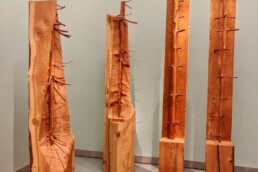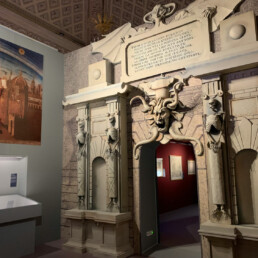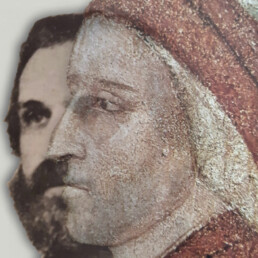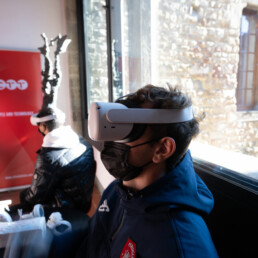“In-Verse Trees” exhibition by artist Giuseppe Penone in the Uffizi Gallery
Thirty works pay tribute to Dante, on display until October 3

The “tree that thrives from summit down” (Divine Comedy, Paradiso, 18: 28-30) is the guiding metaphor of “In-Verse Trees”, the exhibition by artist Giuseppe Penone on display in the Uffizi Gallery. Until October3, viewers take a journey through over thirty works that include sculptures, installations, drawings and engravings that are a tribute to the Supreme Poet, but which also retrace the central themes of the artist’s work.
An essential form, for Penone the tree has always been the archetype of sculpture and at the same time, living matter similar to that of the human body. To celebrate the year of Dante, Giuseppe Penone created Abete, the monumental steel and bronze installation measuring over 22 meters that’s located in Piazza della Signoria.
The exhibition route
The artist’s intended route was carried out, beginning with works from the late 1960s, where the theme of the relationship between humankind and nature is already present. Penone uses the language of sculpture in his works, with elements of pressure, matter and change. This is also evident in the 15-meter work titled People and Years (2020), on display for the first time.
Skin is the quintessential organ of contact: footprints become images that everyone produces, transformed into sensorial maps. The epidermal theme offers the opportunity to put Penone’s work in dialogue with two statues from Roman antiquity. With the installation titled Respirare l’ombra (2000), Penone explores how breath fills and shapes our body, and is in continuous exchange with the external environment. A lung of gilded bronze leaves is placed in line with the walls, at a height equal to that of the human lung, referring to the complementary relationship between plant photosynthesis and human respiration.
There are numerous poetic metaphors in Penone’s works, where nature and humanity merge. An essential form, trees have always been the archetype of sculpture for Penone and at the same time living matter, similar to that of the human body. The artist chose plants as the common denominator of an investigation into the ambivalent relationship between internal-external, positive-negative, human-plant, and art-nature, like Dante’s “tree that thrives from summit down”.




